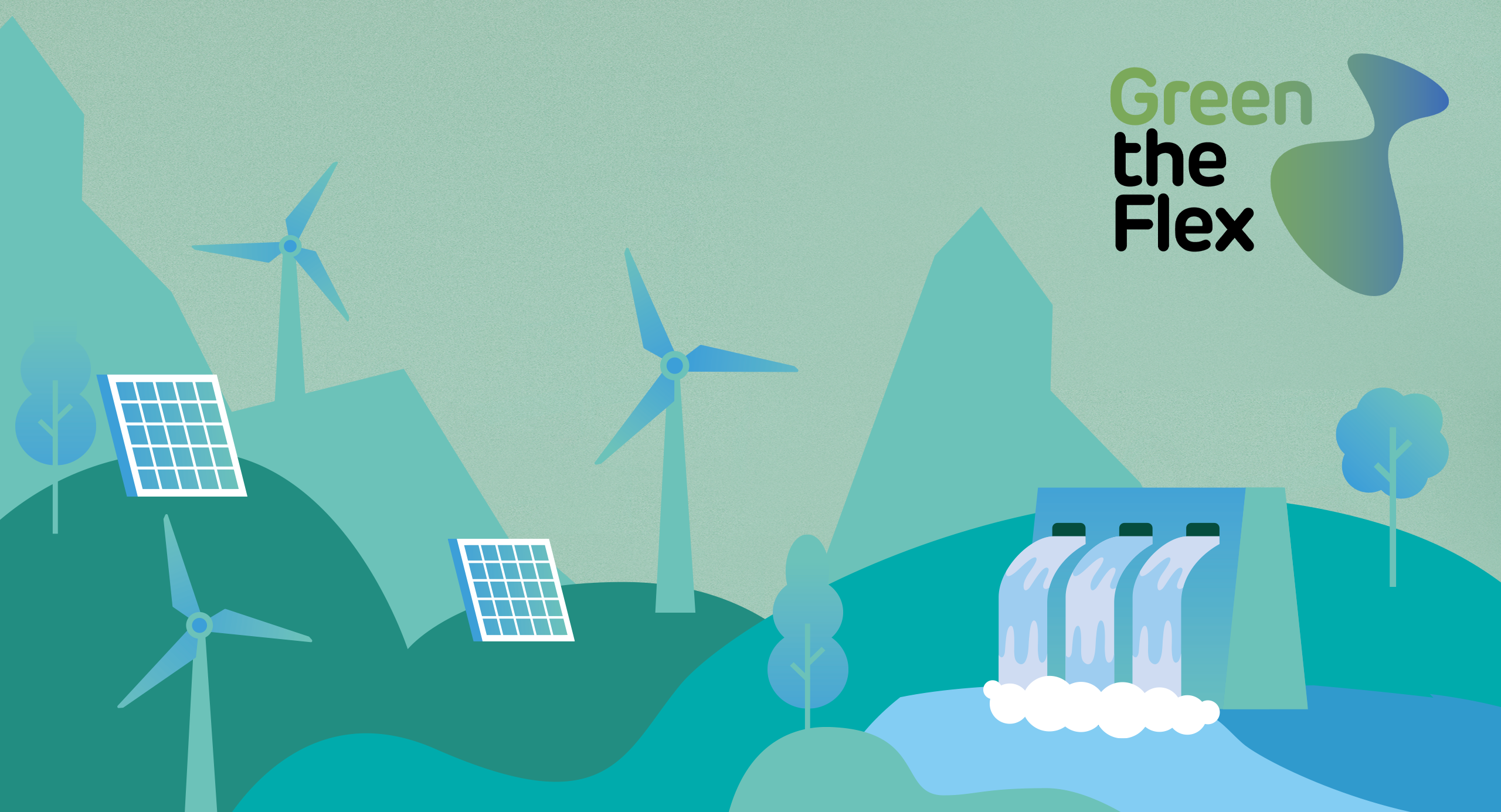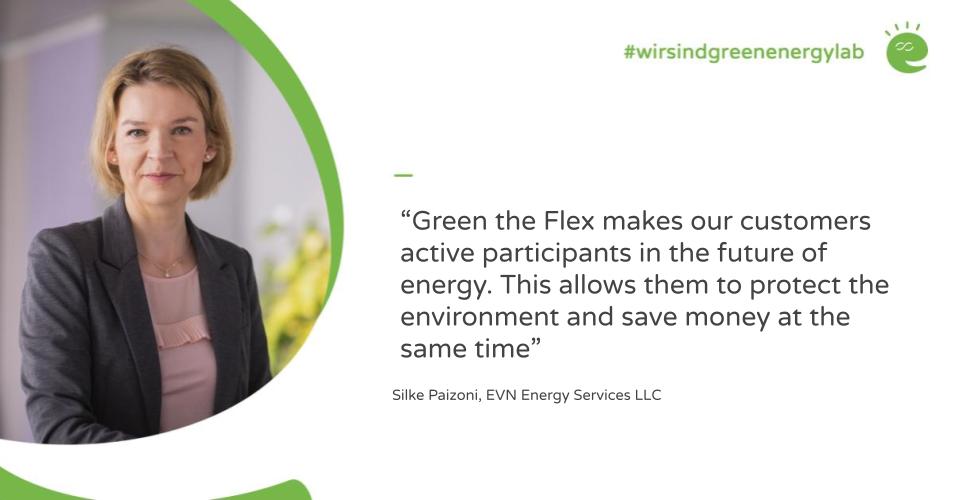Green the Flex
Intelligent load shifting at customer level
The shift towards a sustainable energy system with 100% renewable energy comes with a number of challenges that need to be addressed. For example, the volatility of renewable energy sources can threaten the stability of the power grid. For the power grid to remain stable, generation and consumption must always be in balance. In times when electricity generation from water, wind and sun is not sufficient to cover consumption, fossil power plants are currently needed to provide the necessary stability. Since electricity generation from renewables fluctuates not only seasonally but also in the short term and is difficult to predict, electricity demand must be matched with generation, both temporally and regionally. So-called flexibility is the ability to do just that by controlling and optimizing decentralized units. The cooperative project “Green the flex” is investigating innovative approaches to increasing flexibility.
Objective of the Green the Flex project
The idea of the project is to shift the electricity consumption of households to times when sufficient electricity, ideally 100% green electricity, is available. The focus here is on the typical large consumers of a household, such as hot water boiler, heat pump, battery storage or e-car, where time shifts do not lead to any loss of comfort. For a single household, this step is not significant, but if a large number of households are integrated, energy on the order of a power plant can be quickly saved, thus reducing the load on the grid.
The goal of “Green the flex” is to provide customers with easy-to-use applications that allow them to adjust their electricity demand “behind the meter”, provide flexibility with their appliances, and thus participate directly in the energy markets. By 2025, 3,000 households will thus be bundled in a smart swarm storage system.
Approach and methodology of the Green the Flex project
Matching demand to generation, also called “demand-side management,” can reduce the use of fossil fuel power plants and the associated CO₂ emissions. This project alone is expected to save at least 3,500 tons of CO₂ per year. The consumption peaks are smoothed and thus even more electricity from renewable energies can be integrated and used in the existing grid.
This gives end customers the opportunity to actively participate in the energy transition. The optimization assistant “joulie” is the technical core of this project. It connects the power grid and the consumers in the household to form an intelligent overall system, a so-called “swarm storage”.
In “Green the flex,” up to 800 decentralized units will be consolidated and used for auxiliary services in three years. This means that more than 6 MW of capacity and more than 5 GWh/a of short-term load shifting potential are available to our energy system as flexibility.
You can find more information on the “Green the Flex” project and how electricity customers can participate here: https://www.evn.at/home/photovoltaik/energiemanagement

© European Union
Funded by the European Union. Views and opinions expressed are however those of the author(s) only and do not necessarily reflect those of the European Union or the European Climate, Infrastructure and Environment Executive Agency (CINEA). Neither the European Union nor the granting authority can be held responsible for them.
The following model solutions are being developed in the Green the Flex project:
Customer applications for participation in demand-side management
Bundling of private PV battery storage for use in the system
Media reports on the project
Solar energy: how to successfully expand photovoltaics – science.apa.at
Flexibilization as the key to the success of the energy transition: 3,000 households are participating in the "Green the Flex" project to develop an intelligent solution to adapt electricity consumption to the timing of solar power generation. This is an essential prerequisite for driving forward the expansion of renewable energies.
To the articleIntelligent energy control and solar energy – Energie-und-Umwelt.at
How the "Green the Flex" project is driving Austria's energy transition: As sun and wind are not always available, we need to flex our electricity consumption to use energy when it is available. This helps to stabilize the electricity grid and maximize the use of renewable energy.
To the article“Green the Flex": How 3,000 households are driving the energy transition forward – elektropraxis.at
The electricity grid must become more flexible in order to keep pace with the expansion of PV. 3,000 Lower Austrian households are therefore participating in the “Green the Flex” project to develop an intelligent solution to adapt electricity consumption to the timing of solar power generation.
To the articleGreen the Flex: Electricity customers contribute to system stabilization and save CO₂ – press statement EVN
The cooperation project "Green the flex" between EVN and Cybergrid was recently selected by the European Commission as the only Austrian project to receive funding from the EU Innovation Fund. The aim of the project is to bundle 3,000 households in a swarm storage system by 2025. With this project, customers become active participants in the future of energy.
To the article


